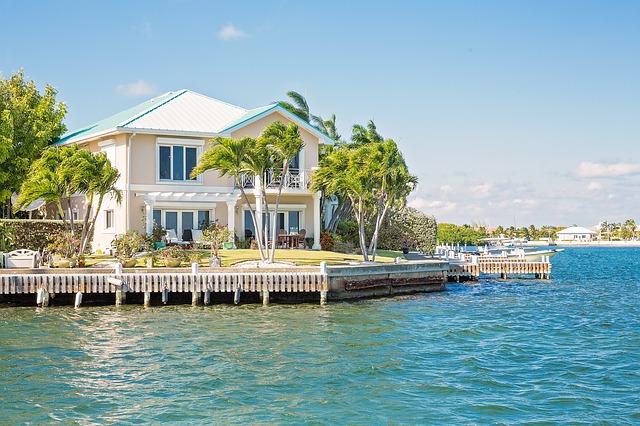In the recent census data, 43% of 20-24 year olds and 17% of 25-29 year olds are living at home. While you might be busting to move out and in with some friends, think again…this is the perfect time to save money for your own place. If your parents can put up with you for a little bit longer and you are vigilant with your savings, when you move out for the first time you might be able to move into your own apartment – now wouldn’t that be nice.
I can see you rolling your eyes and thinking it’s not possible, so to show you how this could work I want to introduce you to Cassie. Cassie is a 25 years old and works as a systems support technician earning $55,000 (excluding Superannuation). She lives at home in South Sydney with her parents and her younger brother and is lucky enough not to have pay board or contribute to living expenses. Cassie is hoping to be able to buy an apartment around the same area her parents live in for $400,000. She is focused on saving $40,000 as she knows that saving any less than that may mean she has to pay additional fees such as lenders mortgage insurance and it will affect her loan to value ratio.
Creating a financial plan
Although Cassie is nowhere near ready to borrow money, now is a good time to talk to a home loan specialist to create an achievable budget. Together they can work out how much she would be able to save and how much based on her current earnings she may be able to borrow in the future. Getting an idea is important, but keep in mind this figure is indicative only, before a lender will lend you any money they will assess your financial situation, credit history, assets and liabilities and more.
A look at Cassies’s regular expenses and where she can save
Health insurance
Cassie currently pays $38.55* a week ($6013.80 over 3 years). If Cassie changes her plan to basic cover which costs $22.85* a week she will save $2449.20 over 3 years.
Mobile phone
Cassie is on a $89 month phone plan. She is near the end of her contract so if she changes this to a $69 / month plan she will save $20 each month, which is a saving of $733 over 3 years.
Eating out
Cassie loves going out and seeing her friends and eats out 2 nights per week. Each dinner usually costs $40. This adds up to $80 per week and $12,480 over 3 years. If Cassie cuts back her dinners and only goes out once per week she will save $6240.
Morning coffee
Each morning on the way to work and on the weekend Cassie picks up a take away coffee from the local coffee shop. This costs her $3 each day which over 3 years = $3276. If Cassie decides to only have a take away coffee on the weekends and instead buys herself a reusable cup to make an instant coffee at home before she leaves for work she will save $2340 over 3 years.
Car and commute to work
Cassie’s car a Honda Jazz, was a gift from her parents after she graduated from university and she uses it each day to drive to work as there is free parking near by her office. The costs to drive from her home in South Sydney to Green Square is approximately $6894 each year according to the RACV car running costs calculator.
If she was to change her method of transport and catch a train which would cost approximately $52 each week, she would be able to reduce her car running costs and save approximately $4772.04 over 3 years on her commuting costs.
Taxi & Uber
Once a month Cassie will head to the city with her friends for a night out. This will normally cost her around $40 each way in taxi or Uber rides as she always splits it with a friend. There isn’t much she can cut here as she needs to get home safely, but she needs to make sure she always shares the ride with a friend and that they always split the bill.
Weekend nightlife
Every weekend Cassie and her friends head either to the local pub / club and at least once a month she will head into the city. On an average night she would spend $200 on cocktails and food. But if she changes her drink of choice from a cocktail to a cheaper option like beer or wine or even a standard mixed drink she could reduce her spend to $150 and over 3 years this would save her $7,800.
Clothes & Gifts
All girls love clothes and Cassie is no exception. Cassie currently spends around $120 each month on a new piece of clothing, shoes or gifts for a friend’s birthdays. Whilst she can’t cut this out altogether she could cut her monthly expenditure to $80 which would help her save $1560 over 3 years. Cassie needs to become a smarter shopper and only shop during sale times, ban herself from online shopping and even look to sell her old clothes on eBay.
Food at work
Cassie has a number of take away places near her work and will alternate between Chinese, a sandwich and Japanese through the week. This costs her on average $12 each day. If she brought her own lunch into work or ate left overs 3 times per week she would save $5184 over 3 years.
Holidays
Cassie usually goes away for a big overseas trip once every 18 months. She will spend around $5000 each time. For the next 3 years if Cassie decides to change her travel plans and instead travel locally in Australia, take more driving holidays to places she can access in her Honda, uses sites like Airbnb to find reasonably priced accommodation, keeps an eye of flight sales and only travels out of peak seasons she would be able to save $2500.

By cutting back on her expenses Cassie will be able to save approximately $33,000 over 3 years which is great but not enough for the deposit she is looking for.
How can Cassie increase her savings?
Let’s see what extra money Cassie can save and how she can increase her deposit money.
Earnings
Cassie’s weekly salary (net) – $858.71
Weekly expenses
Mobile phone: $16.10
Coffee, dinners, nights out and work lunches: $220
Car, fuel, car and health insurance, public transport: $256.85
Weekly allocation for clothes: $20
Weekly allocation for holidays: $16
Total expenses: $528.95
How much does Cassie have each week after expenses: $329.76
Cassie decides to save $260.00 each week and put it into a high interest savings account. Over a 3-year period, if she places $260 into her account each week she would have saved $41,649.15^– a bit over the amount she is needs for a 10% deposit on a $400,000 apartment. She is now ready to talk to a home loan specialist and discus loans, pre-approvals and begin the home hunt.
